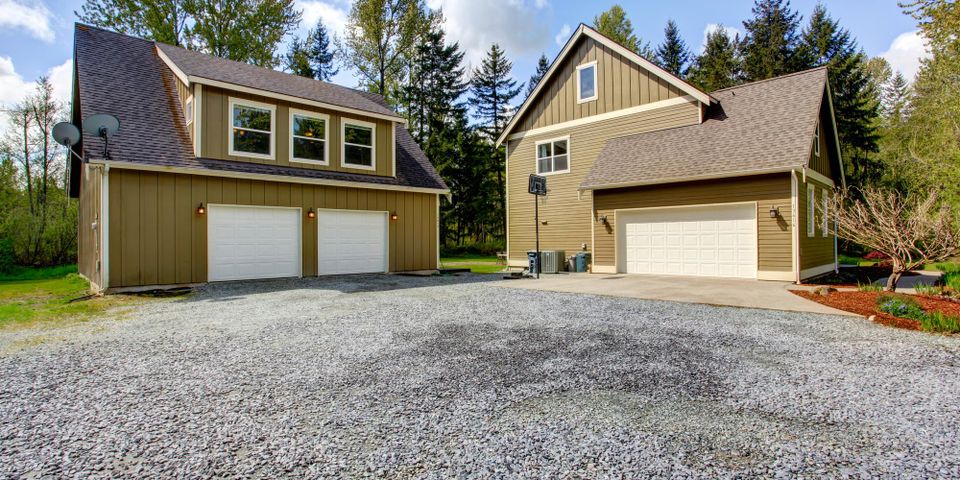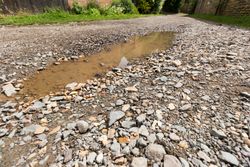
Every day, potholes appear on roads, driveways, and parking lots across the country. Along with being unsightly, potholes increase the risk of vehicle damage, such as flat tires, bent rims, and steering damage. Protect yourself from these common nuisances by learning how they form along with the basics of pothole repair.
A Guide to Potholes
How Do They Form?
When it rains or snows, water seeps into the ground beneath asphalt pavement or gravel. Upon freezing, the water expands, causing the ground to push up.
 When it rains or snows again, water enters those weak points, freezes, expands, and invites even more cracks. Then, vehicles drive over the cracked area and cause it to collapse, creating a pothole. The hole then grows as people drive over it. Potholes are most common as winter ends and spring nears, as the changing weather facilitates the freeze-thaw cycle.
When it rains or snows again, water enters those weak points, freezes, expands, and invites even more cracks. Then, vehicles drive over the cracked area and cause it to collapse, creating a pothole. The hole then grows as people drive over it. Potholes are most common as winter ends and spring nears, as the changing weather facilitates the freeze-thaw cycle.
How Are Potholes Treated?
Before a pothole can be repaired, it must be cleaned of loose rocks, leaves, and other debris. Then, the pothole should be filled with the same material the rest of the pavement consists of, such as gravel.
To allow for compaction, the pothole should be filled about ½” above the surface. Finally, the new material should be spread and compacted with a tamper to ensure the surface is firm and matches the rest of the area.
If potholes are destroying your rock or gravel driveway, turn to the team at LP Stewart & Sons Inc. For more than 75 years, this team has provided reliable pothole repairs for homes and businesses throughout Lincoln, NE, and the surrounding areas. They also deliver a variety of landscaping materials including rock, gravel, and sand. Learn more about their services online. Call (402) 423-5676 to schedule your pothole repair today. Read reviews from satisfied customers on Google.
About the Business
Have a question? Ask the experts!
Send your question

